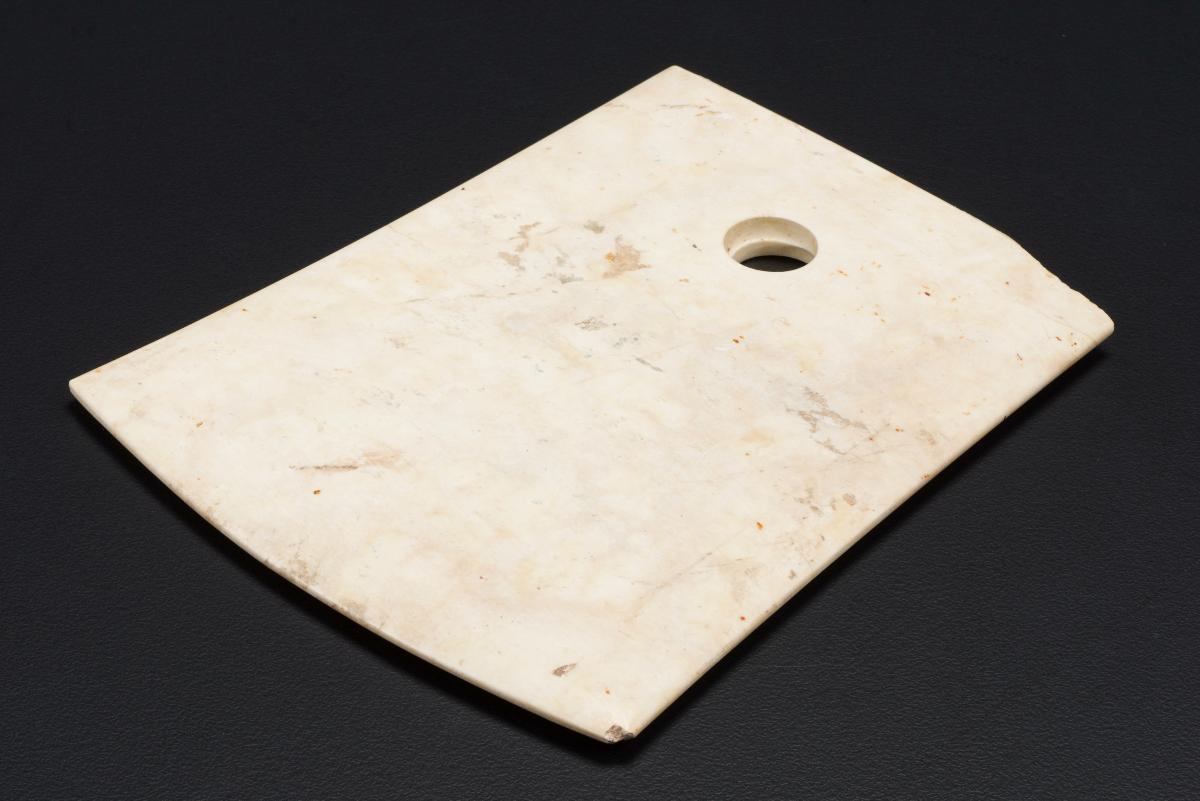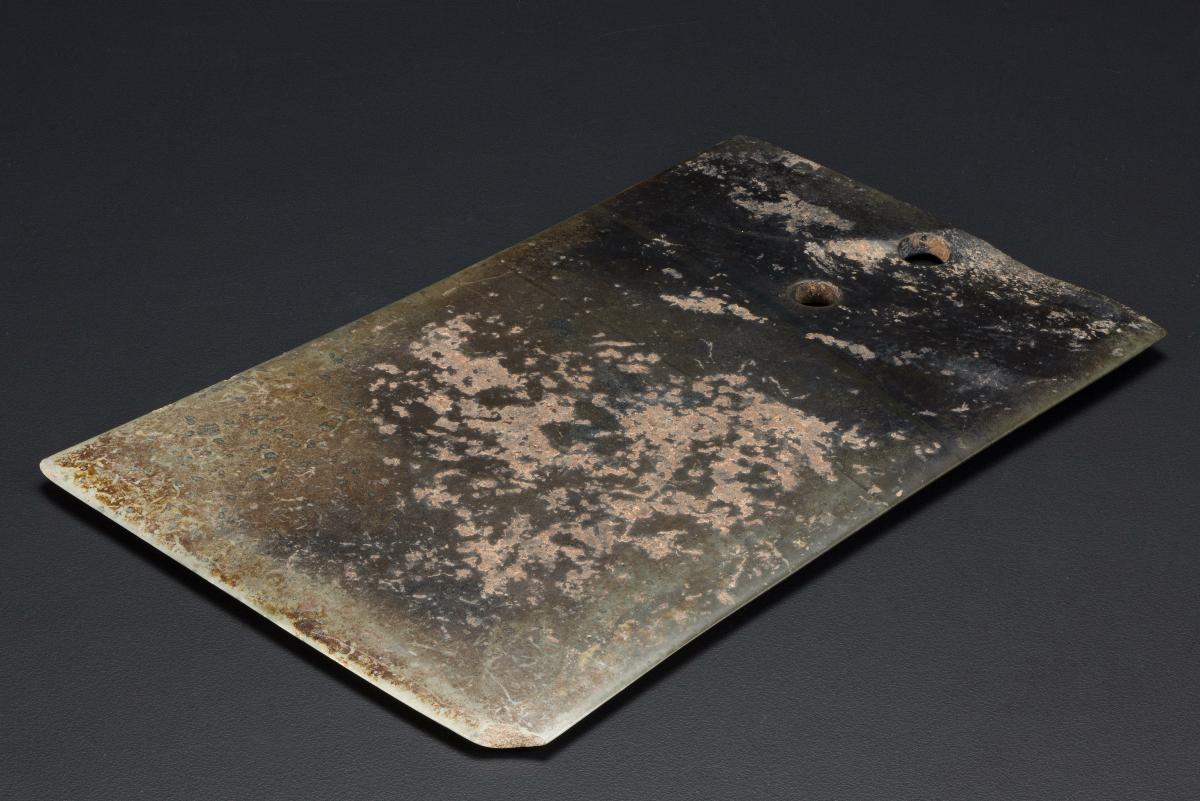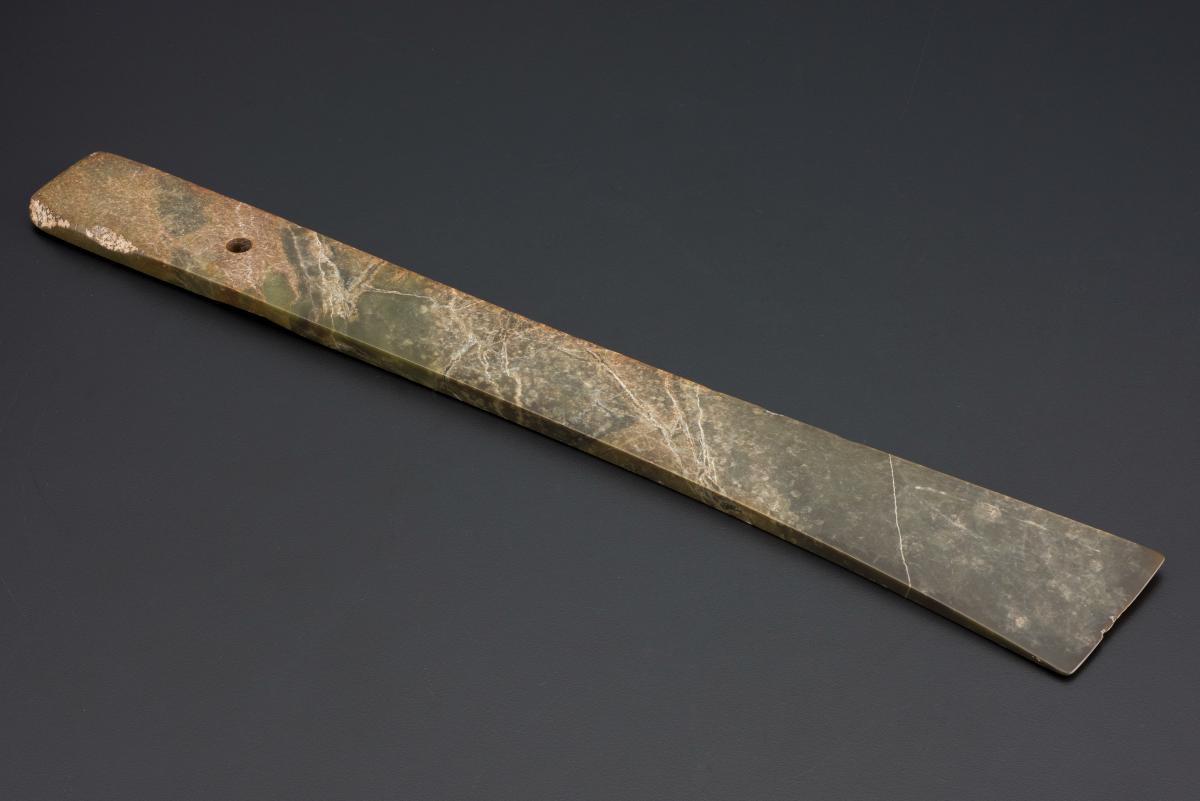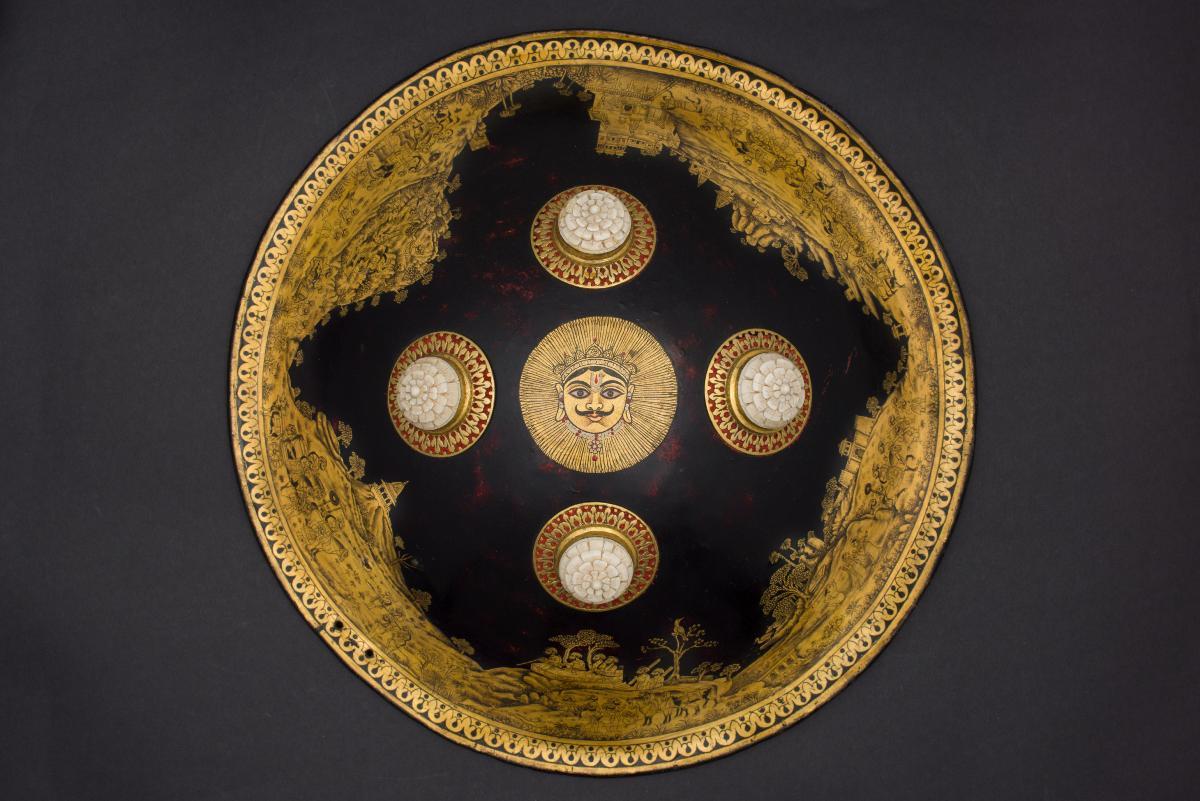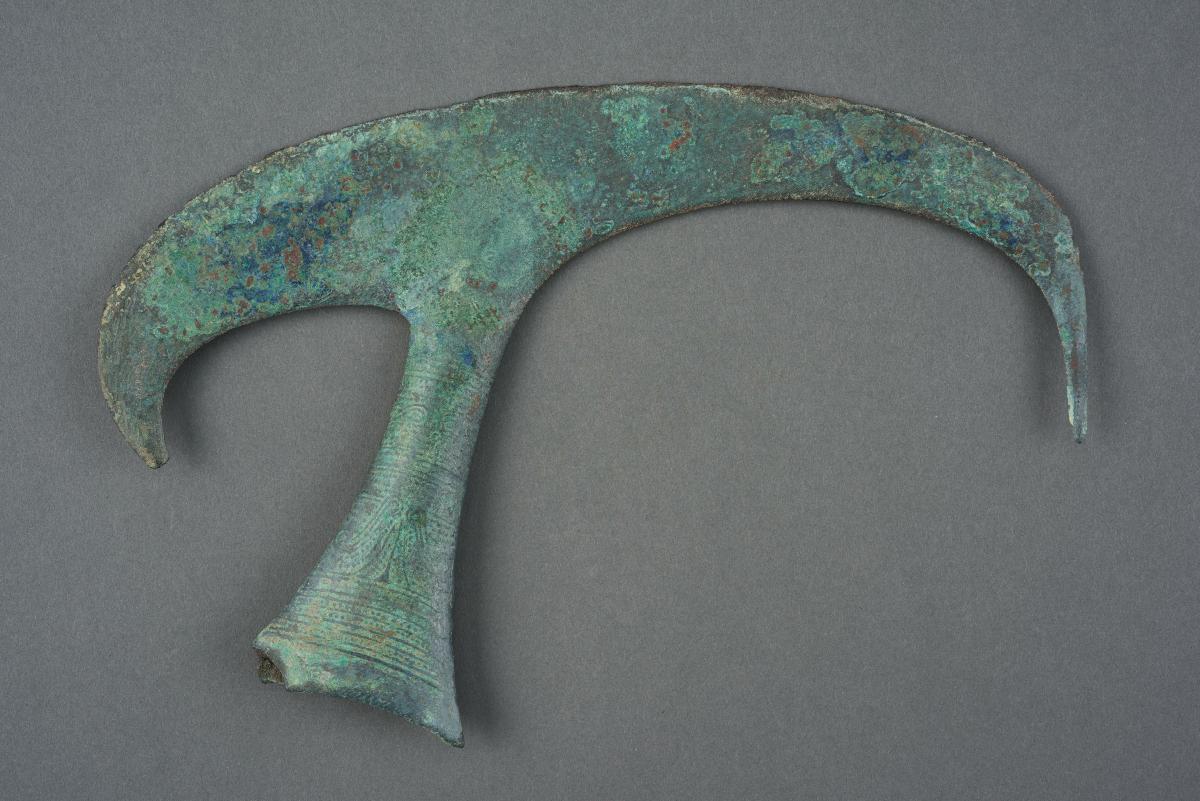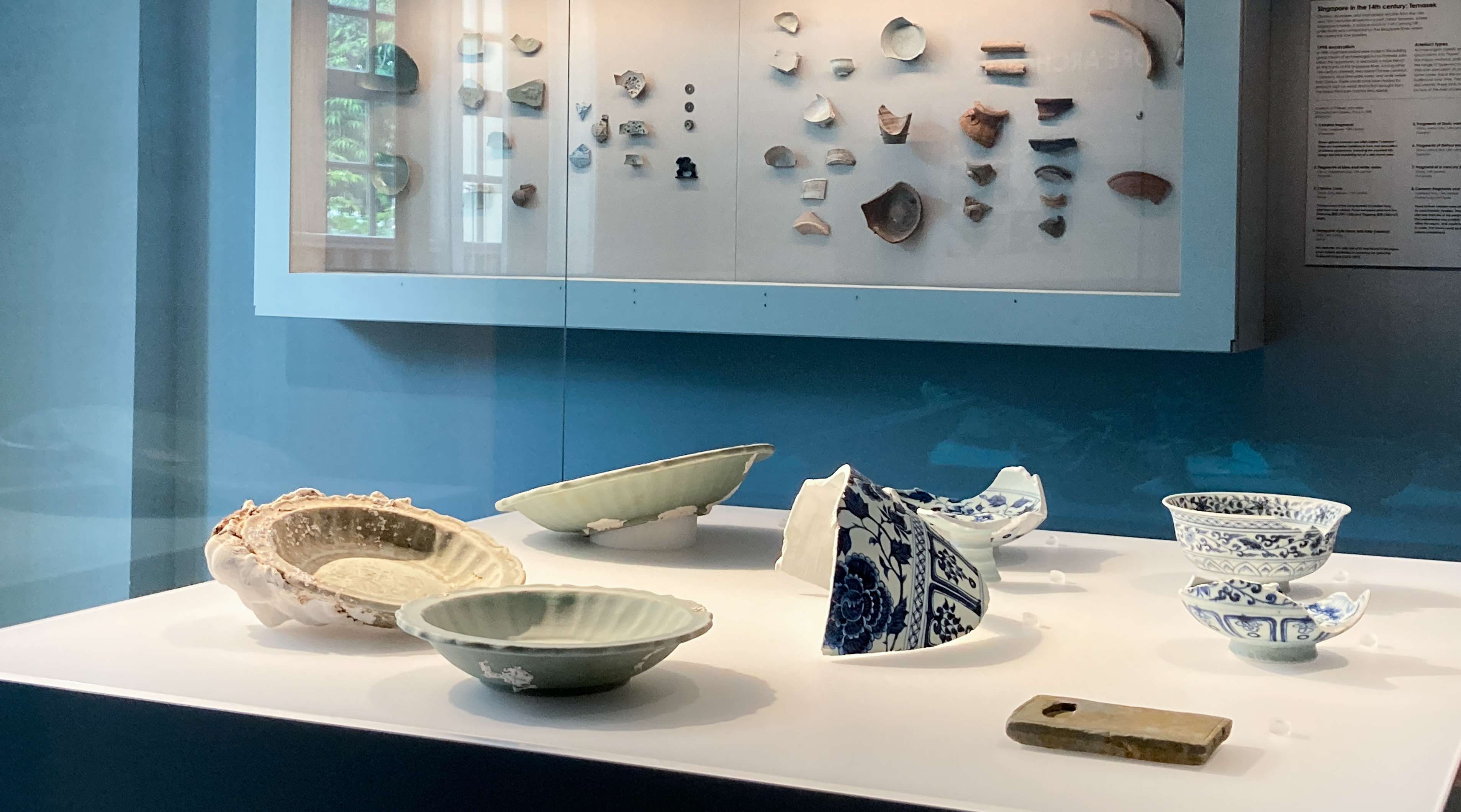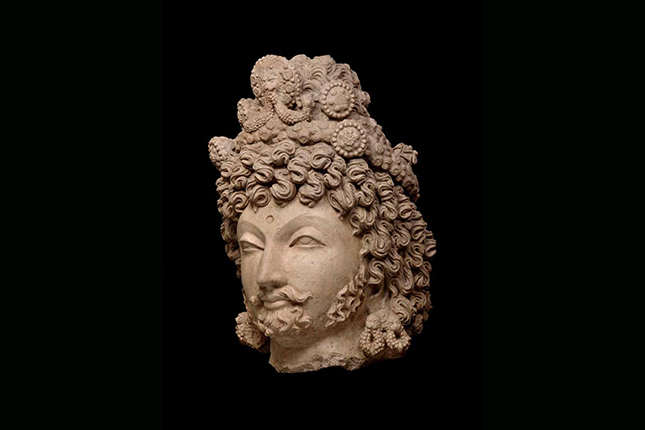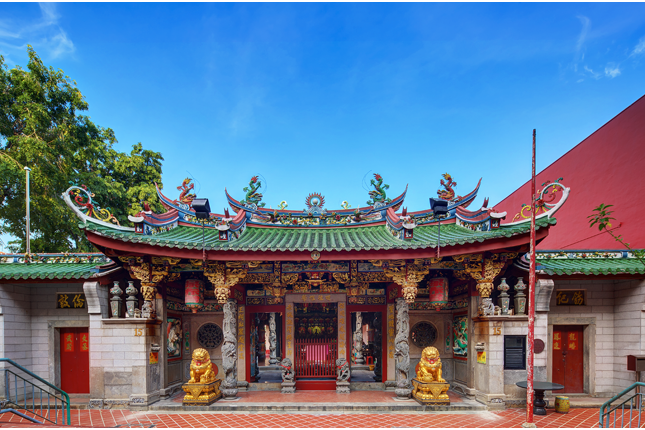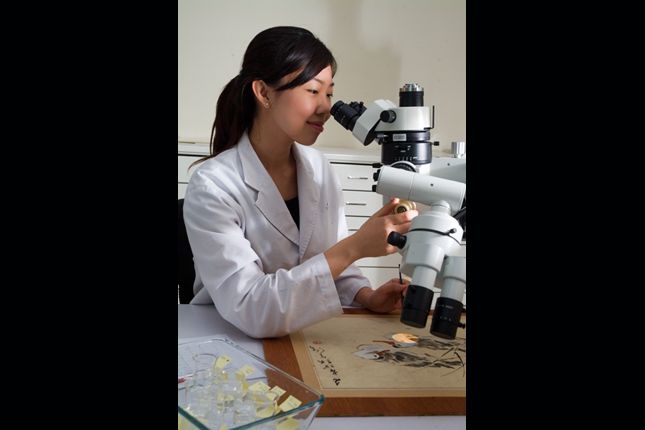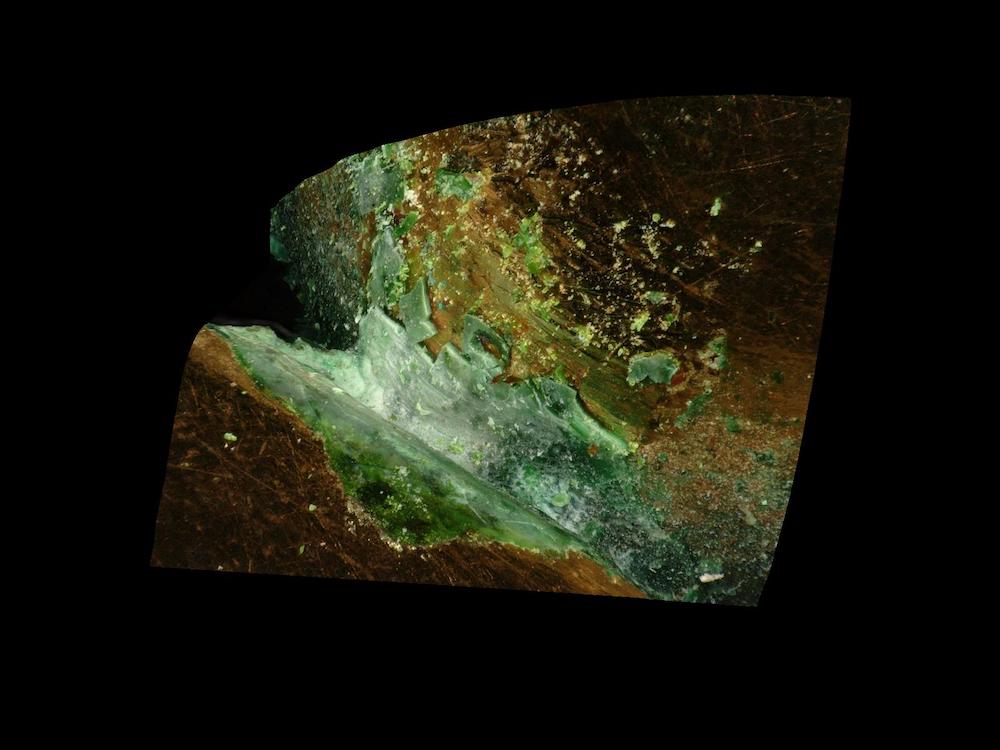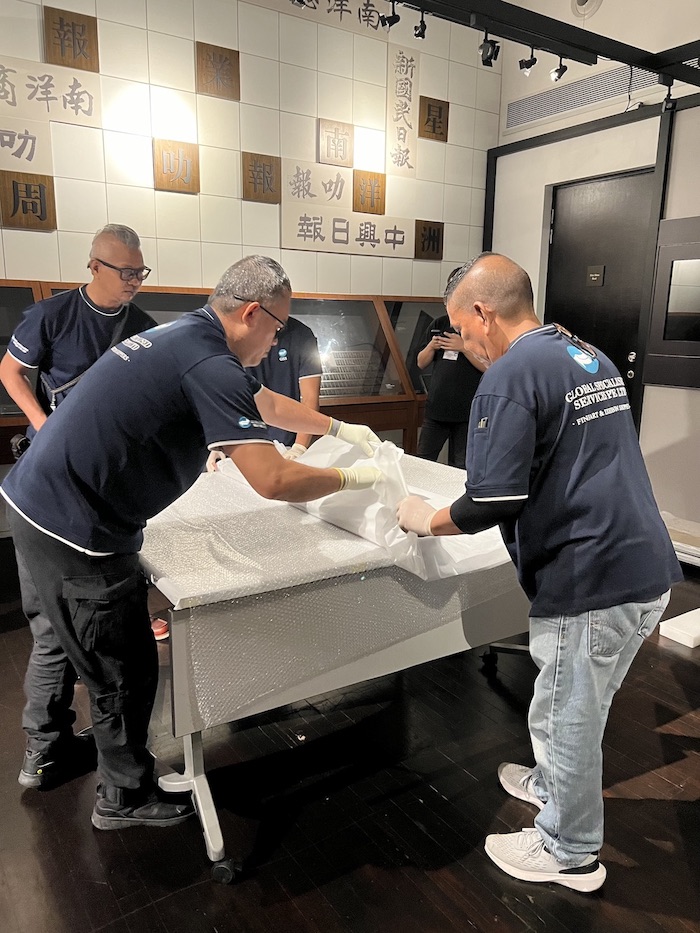This trapezoidal axe head has a beautiful abstract form. The surface of the axe head is highly polished resulting in a glassy sheen. The opaque colour of the axe indicates an alteration of minerals in jade due to chemicals, temperature and pressure in tombs. The hole was drilled from two sides with a ridge visible inside the aperture. This is the typical hole-drilling method for Liangzhu jades. The beveled and round cutting edge is quite thin and sharp. The hole used for affixing the axe head to a handle was drilled from one side. This ceremonial axe is based on utilitarian stone axes of the period. The preciousness of the material, the highly polished surface, and the tendency of jade to fracture and chip suggests that this axe functioned as a ritual object rather than as an everyday stone tool.




